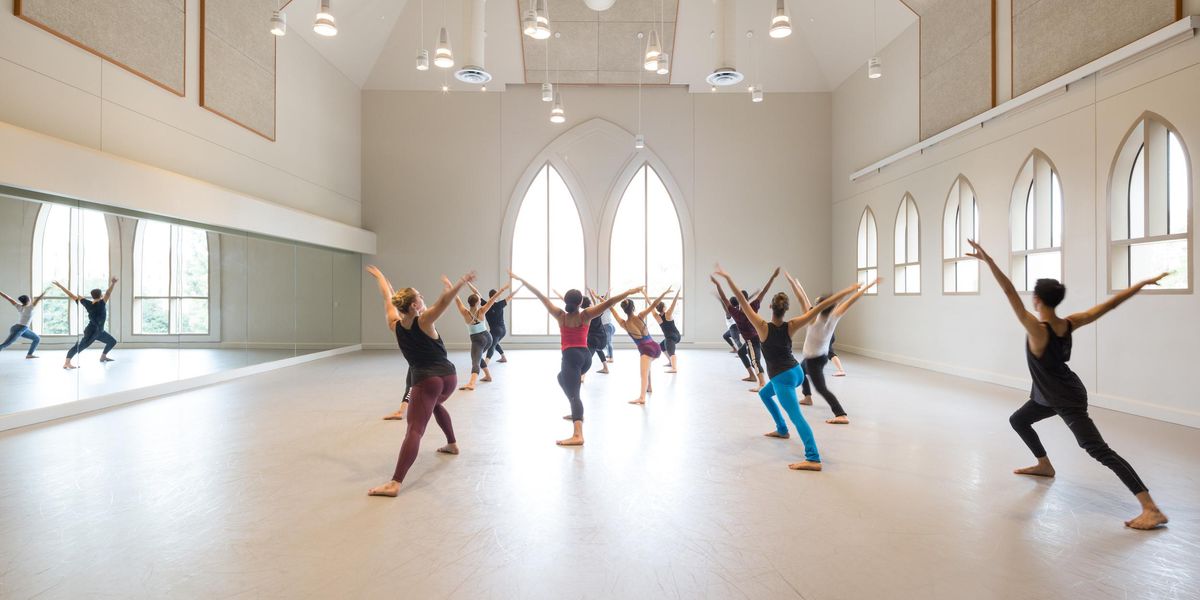Painless Goodbyes
Heather McGinley in Paul Taylor’s Arabesque. Photo by Paul B.Goode, Courtesy PTDC
Heather McGinley’s transition from the Martha Graham Dance Company to Paul Taylor had few bumps. She had danced with Graham for several seasons, but always longed to work with Taylor. She auditioned unsuccessfully in 2010, and then, during a break in the Graham schedule, she tried again. This time, Taylor made her an offer—just as the Graham company was working out its touring schedule.
A job in a dance company is not forever. Dancers can be lured away by the chance to work with a dream choreographer, more weeks of work or more money. The terms on which you go say a lot about your professionalism, and the dance community is a close-knit one. It helps to cultivate a reputation for being responsible. How can you leave gracefully? Here are three elements to keep in mind.
Timing Counts
McGinley knew she needed to alert Janet Eilber, Graham’s artistic director, right away, so she could factor the dancer’s absence into her plans. “If you leave a director in an uncomfortable position, it will not reflect well on you,” McGinley says. While opportunities don’t always come up at the most convenient moment, Ballet West artistic director Adam Sklute points out that there are built-in departure points when dancer contracts come up for renewal. “That’s the natural time to make a career switch so that everyone has time to adjust,” he says.
Be Direct
Honesty is the best policy, even if it makes for an uncomfortable conversation. In the age of social media, remember that every comment you type can fly quickly around the internet. Telling your director one reason you’re going and your friends another will quickly undermine your credibility not only with your old boss, but very possibly with your new one. “Don’t beat around the bush,” says Sklute. “Be open, mature and respectful with your artistic director. The dance world is a small one, and people talk.”
Ease The Transition
Artistic directors choose their season with specific dancers in mind, so leaving midway can leave them scrambling. “Dancers need to understand that they are under contract,” says Sklute. “They should be ready to negotiate the best time for departure and hear their director say ‘I need you to stay this long.’ ” A little flexibility can go a long way. San Francisco-based ODC dancer Josie Sadan suggests offering to help with the transition by working with a new company member—something she had appreciated when she joined Robert Moses’ Kin.
Don’t be surprised, though, if your company prefers a clean break. “Make yourself available to pass along your knowledge, but also be ready to just rip off the Band-Aid and start your new chapter,” Sadan says. Dancers need to remember everyone is replaceable. “We develop this anxiety thinking, ‘I can’t leave them in the lurch! What will they do without me?’ ” says Sadan. “They’ll make it work. You can move on without drama.”
Pre-Audition Zzzzzs
Sleep is cumulative, as studies have shown, and so is sleep loss. Scientists at the National Institutes of Health recently established a connection between learning, memory and sleep. The less you get, the less you can learn and retain. So don’t stint on your Zzzs in the week before an audition. Artistic directors are not only looking for strong technique, but the ability to pick up material quickly and adapt on the spot.
Post-Audition Recharge
Auditions are always grueling, but come summer, they test your stamina even more. You dehydrate faster in hot weather, and you can feel depleted well before the final round. Want a fast way to recharge? Grab a slice of watermelon. The seasonal treat gets high marks for helping to quickly rehydrate, and for relieving muscle soreness. Need more reasons? It also contains about one third of your daily vitamin A and C requirements. So chomp away!
Above photo: Thinkstock




